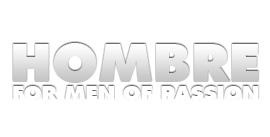
 As testament to the ‘good life’ we are proud to bring you the ultimate guide…everything you always wanted to know about cigars.
As testament to the ‘good life’ we are proud to bring you the ultimate guide…everything you always wanted to know about cigars.
From the prestigious Garzaroli’s Graycliff Cigars in the Bahamas to the DeGaetano’s family Country Club Cigars lounge in New York – and throughout the world – cigar smoking is one of life’s ultimate pleasures.
Cigar aficionados say to “really” enjoy a cigar you need time, a good brandy to mature the taste and conversation that stimulates the experience. At Country Club Cigars I found all three ingredients. I also found a knowledgeable and helpful family ready willing and able to assist the novice and provide the aficionado with a robust selection. 
Origin
Let’s begin with the origin of tobacco. There are several countries that produce quality cigar tobacco: Cuba, Dominican Republic, Honduras, Mexico, Nicaragua, and Puerto Rico.
Taste
Taste is influenced by the seed, soil, climate and growing conditions in each country and the particular region in which the tobacco is grown. Taste is also determined from where in the plant the leaf is cut. Aging of the leaf brings out the taste of the tobacco. Tobacco becomes full bodied the longer it is allowed to age in a controlled environment. Taste falls into three strengths; mild, medium and full bodied. Mild is usually light, best for beginners. Medium falls in the middle. Full Body has a thicker smoke and a heartier taste.
Color
Color of the wrapper also signals the taste of the cigar. A light outside color is known as a Connecticut or Cameroon wrapper and is always mild. The “Corojo” wrapper is medium brown to dark brown and usually has a mild to medium taste. A dark brown to black color is known as a “Maduro” with a full body taste. “Ligero” is a strong tasting leaf known by its very dark brown to black color.
Layers
Each cigar has three layers; the first layer is the “filler” which becomes the middle, the second is the “binder” and the third is the “wrapper”. A cigar can be a blend of different tobacco or can be called “puro” which indicates that each of the three layers is from one farm or location. 
Rolling
Cigars can be rolled by hand, machine or box press. Hand rolled cigars are the most expensive and can be a great attraction for merchants and for special events. The box press creates a squared shape which prevents the cigars from rolling off the table.
Size
There are different size cigars and size does matter. Each cigar maker can make their cigars in any shape, size or length.
Robusto is always 5 inches
Toro is always 6 inches
Churchill is always 7 inches
Belicoso and Torpedo are the shape of the tip of the cigar.
The Top, Tip or Cap of the cigar is held together with vegetable glue. It can either be rounded or torpedo shaped. The bottom of the cigar is called the “foot”. The width of the cigar is referred to as the Ring or Gauge or Girth. Any cigar can be made in any ring size. The most popular ring sizes are 56, 58 and 60. There are many brands to choose from, each having a distinctive taste depending upon the country in which the tobacco was grown and either “puro” or blend of tobacco.
Humidors
Once cigars are made they must be kept in ideal conditions to maintain freshness. Humidors are a must for keeping cigars fresh, moist and malleable. There are humidors for home, office, travel and for retail stores. Boxes that hold cigars are made with Spanish Cedar for best results. The humidor system should only use distilled water and maintain 70 degrees of relative humidity. The hydrometer is easily seen in each humidor, and when below 70, distilled water is to be added. Do not use sponges since they suck the humidity out of the cigars leaving them dry. Never mix flavored and non-flavored cigars in the same humidor since it will affect the taste of both types of cigars. 
Cutting
Always cut the top of the cigar to create the draw. There are several ways to cut a cigar. There is the straight cut, the ‘V’ cut or the punch. The straight cut is the most popular. The ‘V’ cut is commonly used on the Robusto shaped cigar. The “Punch” makes a hole through the cap of the cigar. Once you make the twist and remove it you can light the cigar and make the draw.
Lighting
Now that you have selected the perfect cigar we need to light it. Only lighters should be used. A lighter should contain anything but butane since, like sulfur matches, the odor of the butane or sulfur will alter the taste of the cigar. Torches are the preferred lighter because they are wind resistant and light the cigar faster and easier. The classic way to light a cigar is with a strip of Spanish Cedar. Ahhh!
Ashtrays
Cigar ashtrays have two or four slots, wider than a cigar so it can rest comfortably. Most often they are made of glass and expensive. 
Events
Cigar makers host events at the many cigar shops and lounges throughout the year. This is an opportune time to sample a particular cigar maker’s best and/or newest line. Place yourself on cigar shop e-mail lists to receive invitations to special promotions and events. Now that you have all the information to select a cigar to your liking, continue to settle in for a community experience that is the antithesis of technology. Relax and savor this respite from the fast pace world. Light your cigar and draw into the ambiance. Enjoy!








